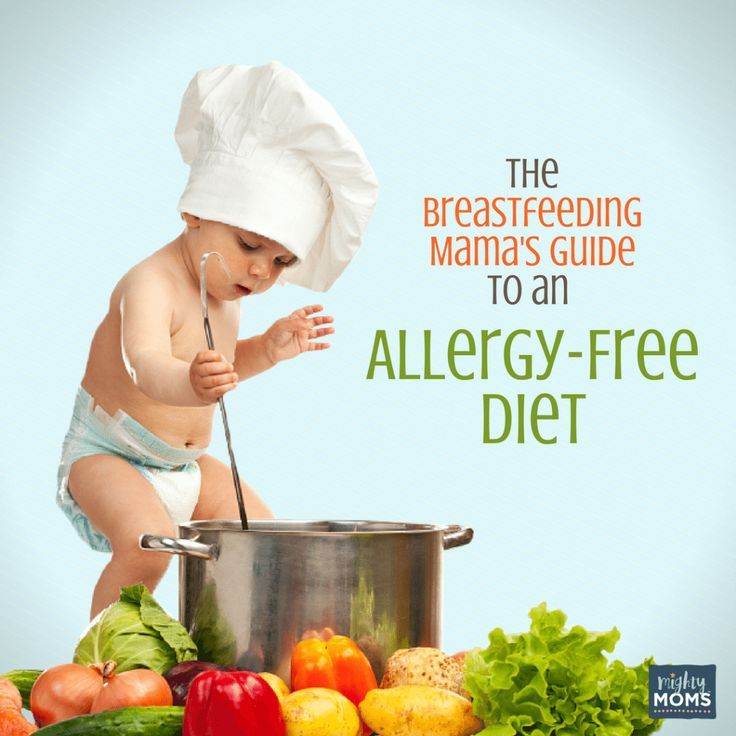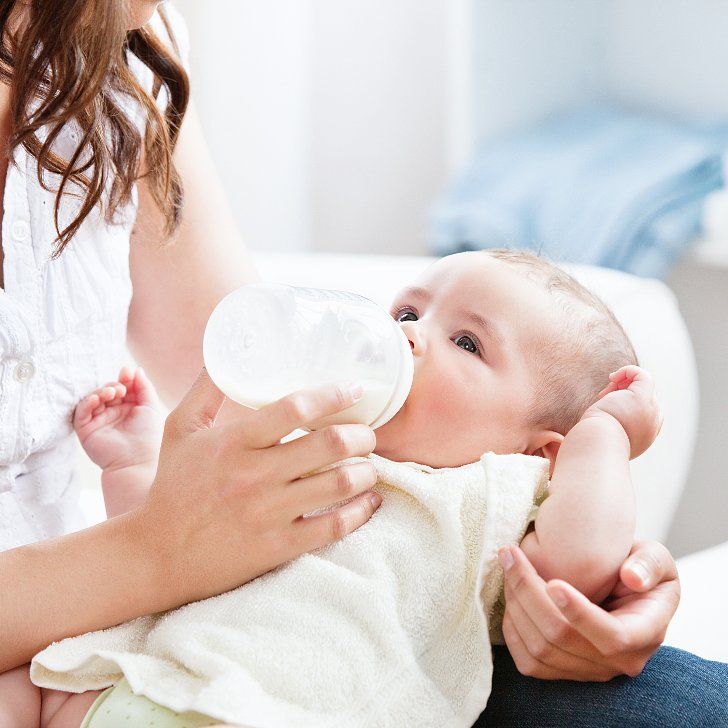Baby food garden
What to Plant in a Baby Food Garden
Pinetree Garden Seeds Guide To Growing Food For Your Baby
If you have a little one that will be weaning or adding solid foods soon, you know you want to feed them the safest, most nutritious and delicious foods possible. But if you have spent any time in the baby food aisle in the grocery store, you also know that store-bought baby foods sometimes add sugars or salts, can use a lot of unnecessary packaging and can add quite a bit to your monthly food budget—especially if you choose organic brands.
Making your own baby food is a surprisingly easy and wonderful way to save money while giving your children a healthy start in life. And if you are going to make your own baby food, why not grow your own ingredients and save even more money? Gardening is a great way to get outdoor exercise, it teaches self-sufficiency, and it instills a respect and love for our natural environment. (And trust us—children absolutely love to dig in the dirt. )
Many Pinetree Garden Seeds customers become home gardeners to help make better, more affordable food choices for their families. They chose Pinetree Garden Seeds because we are one of the few seed sellers to offer non-GMO hybrid, organic and heirloom seeds in smaller quantities at affordable prices—usually about $2 per packet. Follow our Baby Food Garden Guide below and you can start feeding your new baby (and others in your family!) garden-fresh produce for less than $50.
If you are growing food for your baby, we recommend growing that food as organically as possible. Avoid using any pesticides in your garden and know that even some organic pest-control methods, like pepper sprays, are not good for little ones. Talk to your baby’s pediatrician if you have any questions or concerns.
Baby Food Garden Suggestions From Pinetree Garden Seeds
- Hannah’s Choice Wild Maine Blueberries
Okay, technically, blueberry tubers aren’t seeds. But these lovely high bush berries are bursting with sweetness as well as antioxidants, fiber, and manganese. Our Hannah’s Choice variety starts with sweet pink flowers that become clusters of bright blueberries that children love to pick. They also store well, so you can freeze extra berries for use in the colder months. Most doctors recommend steering clear of strawberries until after baby’s first year and we find blueberries fill that gap beautifully.
But these lovely high bush berries are bursting with sweetness as well as antioxidants, fiber, and manganese. Our Hannah’s Choice variety starts with sweet pink flowers that become clusters of bright blueberries that children love to pick. They also store well, so you can freeze extra berries for use in the colder months. Most doctors recommend steering clear of strawberries until after baby’s first year and we find blueberries fill that gap beautifully. - Tendergreen Bush Beans
This charming heirloom produces stringless, pretty bushes that produce loads of fresh green pods. Pick them on the smaller size and they can be eaten fresh or steamed. - Butterscotch Butternut Squash
Doctors recommend butternut squash as an ideal weaning food because it is easy to digest, rarely causes allergic reactions, and is an excellent source of beta-carotene, fiber, and antioxidants. It is also so easy to grow. Our Butterscotch winter variety produces sweeter, smaller squash on hardy, mildew-resistant vines, so it is ideal for gardeners with less space who are trying to avoid sprays.
- Heirloom Tendersweet Carrots
You won’t have to tell your baby to “eat your carrots!” with Tendersweets. Our customers claim they are the best-tasting carrots Your baby will love the surprise of tugging on the green tops to pull up a bright orange carrot and you will love creating color mashes filled with beta-carotene. - Delectable Corn
Sweet, juicy, golden kernels of goodness! Corn is so easy to grow and children love watching it shoot up over their heads over the course of a summer … and turning the dried stalks into crafts come fall. (Corn is not a high allergen food but some babies with eczema can react poorly to corn. Talk to your child’s doctor if you have concerns.) - Ground Control Marigolds
Why are flowers on this list? Marigolds have incredible, all-natural nematicidal effects when planted in vegetable gardens—they help to repel bugs and make it easier for you to avoid sprays. They are also bright, beautiful bursts of color your baby will love.
They are also bright, beautiful bursts of color your baby will love.
- Minnesota Midget Melon (Cantaloupe)
Not everyone has the growing season—or enough hours of sunshine—to ripen cantaloupe. The Minnesota Midget Melon grows sweet, fragrant miniature melons in just 60 days. Children love the size, taste, and summertime smell, while parents appreciate the extra Vitamin C and beta-carotene.
- Tall Telephone Peas
Peas are one of the most nutritious—and delicious—legumes and can be snacked on right out of the garden. Peas sprout quickly in the spring and grow quickly. In fact, by early summer, you can almost *see* them grow. - Sugarbaby Watermelon
The name says it all. Another early variety, these delicious little melons are hydrating treats with amazing concentrations of vitamins A and C, beta-carotene, and even calcium. - Wee Be Little Pumpkin
These absolutely adorable little pumpkins grow on bushes, not vines, and mature quickly enough for most gardening zones. Safe for babies beginning at six months old, pumpkin purees are high in flavor and fiber. Cut off the tops, roast the pumpkin whole, and mash until smooth. Try adding a touch of cinnamon to introduce your little one to the sparkle spices can add to food.
Safe for babies beginning at six months old, pumpkin purees are high in flavor and fiber. Cut off the tops, roast the pumpkin whole, and mash until smooth. Try adding a touch of cinnamon to introduce your little one to the sparkle spices can add to food.
- Pinetree Spinach Mix
Spinach is a baby superfood, and we recommend planting our custom mix of nutrient-rich greens. For babies, pick leaves early—as microgreens—and remember to sow another planting in late summer in time for fall.
- Lemon Summer Squash
Big, bright yellow flowers on long, hardy vines yield round, lemon-sized (and colored) squash all summer long. It’s so easy to gather a few from the garden, steam them, and mash them into a bright summertime baby treat.
We can’t wait to hear how your baby garden—and your baby—grows! We also love hearing about our customers’ best baby food recipes. Stop in and share your favorites or put them in the comments below.
How to Grow a Garden for Homemade Baby Food | Lullaby Earth Blog
Lullaby Earth Blog
April 13, 2017
Making your own baby food can save a lot of money in the grocery store, and growing your own fruits and veggies can save even more. If you have a bit of a green thumb (or even if you don’t), we have tips for an easy garden plot that’s perfect for beginners and experienced gardeners alike. Even if you just grow one new veggie this summer, you’ll be ahead of the baby food game. Read on to discover how to plant your very own baby food garden.
Why Garden?
Garden-fresh fruits and veggies taste amazing, and growing your own food is more environmentally friendly. Plus, you can save hundreds or even thousands of dollars per year on food by learning to take advantage of your yard space with a veggie garden. At a bare minimum, we hope you’ll save a few bucks this summer by planting just a few veggies.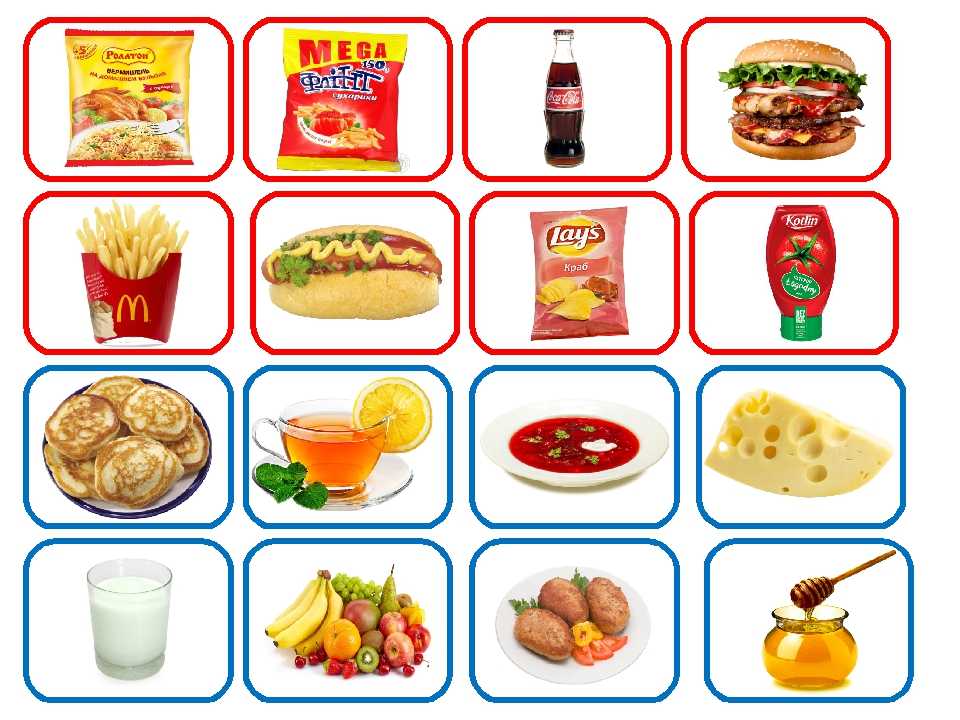
How Much Space Do You Need?
You can take advantage of any available space, even if you’re in a small apartment or house without a lot of yard space. You can plant veggies in containers like large flowerpots, use a tower setup for vertical gardening, or put a plot or two in your back (or front) yard.
An excellent gardening method for beginners, if you have the space, is the square foot gardening method. Typically, this strategy requires a 4’x4’ square of space in your yard for a raised garden bed. If you have less space, a smaller plot will work, especially for younger kids! For a more kid-friendly garden, do a 3’x3’ square so they can reach each section. The name of this method gives away the secret: you’ll be planting different veggies in each square foot section of your plot. A 4x4 plot will have 16 sections and a 3x3 plot will have 9 sections. Choose whichever one works for you and your space!
Which Vegetables Should You Plant for Baby Food?
You can grow pretty much anything your heart desires, but for a baby food garden, we’ll focus on kid-friendly foods that are typical in baby foods.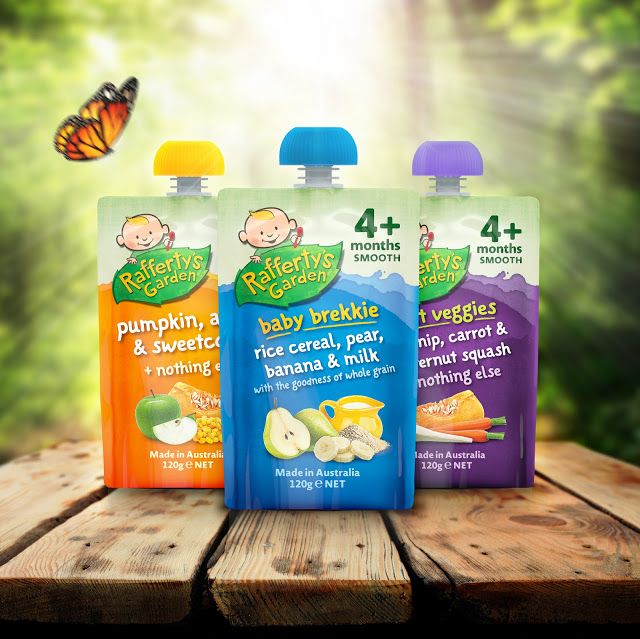 Your ideal foods might differ depending on if you choose to feed purees vs. the Baby Led Weaning method. Either way, you’ll want foods that can be steamed or baked so they are soft and easy for baby to eat. This guide to planning a square foot garden lists how many plots in your garden you’ll need per veggie.
Your ideal foods might differ depending on if you choose to feed purees vs. the Baby Led Weaning method. Either way, you’ll want foods that can be steamed or baked so they are soft and easy for baby to eat. This guide to planning a square foot garden lists how many plots in your garden you’ll need per veggie.
Some excellent veggies for baby include:
- Beets
- Broccoli
- Carrots
- Cauliflower
- Green beans
- Peas
- Potatoes
- Pumpkin
- Spinach
- Squash
- Sweet potatoes
Sweet is a nice treat too, and you can grow the following fruits in your garden:
- Blueberries
- Cantaloupe
- Strawberries
- Watermelon
These fruits may need a bit more space, so research them before you plant to make sure they’ll work in the space and garden type you have. They should all work in containers as well as in a raised bed.
When Should You Start Planting Your Garden?
Start now! Potatoes can be in the ground as early as mid-March, and other plants can be started from seeds inside or planted in the spring. It will depend on your area’s climate and the particular plants you want to grow, so take a look at your seed packets or starter plants to find out when the ideal time to plant them will be. Buy organic or non-GMO seeds when possible.
It will depend on your area’s climate and the particular plants you want to grow, so take a look at your seed packets or starter plants to find out when the ideal time to plant them will be. Buy organic or non-GMO seeds when possible.
How to Make Homemade Baby Food
First, always check with your doctor before you begin feeding solids. Typically, babies shouldn’t start eating solids until six months of age as recommended by the World Health Organization. Your baby may have different needs and it’s even possible that your baby doesn’t have interest in solid food at six months. This is okay. Remember the adage, “food before one is just for fun!” Let your baby try new foods and tastes as long as they’re interested.
If you’re going to do pieces of solid food as recommended by the Baby Led Weaning method, make sure food is soft and easy for baby to smash and swallow. This is a great time for foods like avocado, steamed squash or pumpkin, roasted beet, steamed potatoes and sweet potatoes, and steamed or boiled broccoli and green beans. Babies might just play with food at this point and that’s okay too!
Babies might just play with food at this point and that’s okay too!
If you’re doing purees, first you want to steam the veggies and then puree them in a blender or food processor. Feed them to baby with a spoon like you would any other jarred baby food. You can freeze the baby food in containers or pouches for easy thawing and access later. Purees are great because you can easily combine foods to give your baby a variety of vitamins and nutrients from different foods they might not like alone. For example, beet, applesauce, and spinach will be rich in iron and vitamins, but a plain roasted beet might not appeal to your little one. Mix and match flavors and options - get creative!
Ready, Set, Grow!
We can’t wait to see what you do with your garden this spring and summer. Which veggie or fruit will you grow this year?
Leave a comment
Comments will be approved before showing up.
Also in Lullaby Earth Blog
Are There Monsters Under The Bed Or Is it A Nightmare?
October 29, 2018
Continue Reading
Baby Bump Halloween Costumes
October 19, 2018
Continue Reading
Do I need a Waterproof Pad on a Waterproof Mattress?
September 27, 2018
Continue Reading
90,000 what are the problems, how the menu is compiled, the calorie content, the norms of sugars, fruits and vegetablesVika Vishnyakova
Nutriologist
Author profile
Ekaterina Tabatchova
collected data
profile of the author
I help people to build a balanced diet and a healthy relationship with food.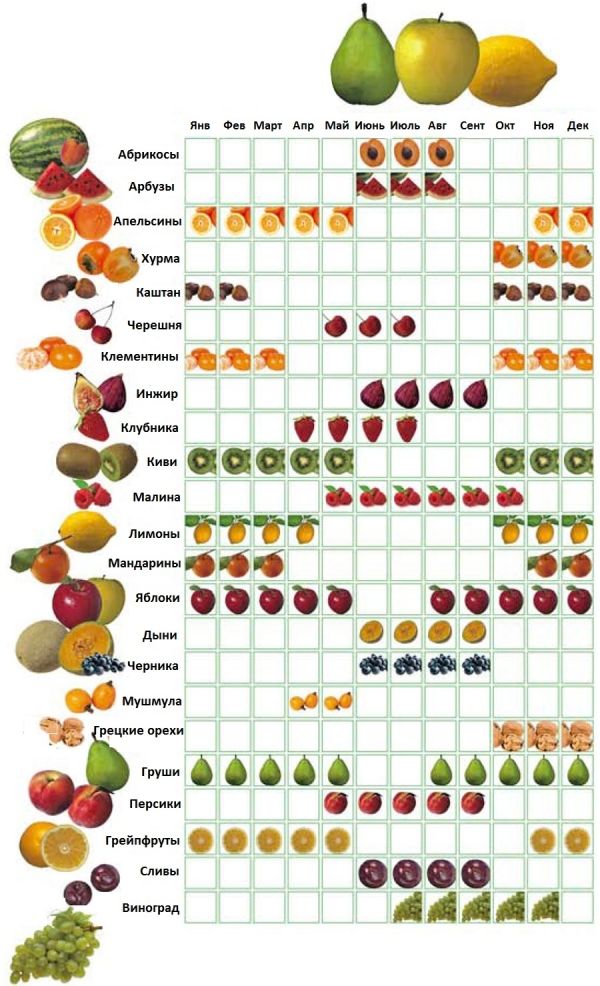
I work not only with adults, but also with children. For example, I am compiling menus for private kindergartens that are focused on an evidence-based approach to health.
The menu in the kindergarten must comply with the sanitary and epidemiological standards for children's institutions and the methodological recommendations of Rospotrebnadzor. These norms should support the health of children - future adults.
But in practice, Russian nutritional standards are very different from global recommendations: children are offered too many calories and few nutrients.
I will tell you what is wrong with the food in Russian kindergartens and how it can be corrected.
How the menu is made in kindergartens
Food for children can be prepared directly in the kindergarten or ordered from catering organizations. If the garden prepares food on its own, it will have to fulfill all the requirements for catering: premises, equipment, raw materials. For example, the kitchen should include seven rooms. Not every kindergarten has such opportunities.
Not every kindergarten has such opportunities.
SP 2.4.3648-20 - sanitary requirements for organizations of education and training, recreation and health improvement of children and youth
are eating. In this case, the number and area of premises are tied to the number of children: there should be at least 0.7 m2 per person.
No matter how the kindergarten gets food, the menu must comply with certain rules. These rules are set not by the kindergarten or the city administration, but by Rospotrebnadzor and the sanitary doctor of Russia - it was they who prepared the documents that form the basis of menu planning in kindergartens in Russia:
- Guidelines for rational nutrition.
- Sanitary and epidemiological norms for the nutrition of children in preschool and school institutions.
Guidelines for rational nutrition explain how many calories, proteins, fats, carbohydrates, vitamins and minerals a Russian should receive depending on gender, age and type of work - mental or physical. These recommendations were developed by the Research Institute of Nutrition of the Russian Academy of Medical Sciences, and approved by Rospotrebnadzor in 2008.
These recommendations were developed by the Research Institute of Nutrition of the Russian Academy of Medical Sciences, and approved by Rospotrebnadzor in 2008.
The recommendations are generally consistent with global practice. For example, the share of animal proteins should be 60% - the same amount is recommended in other countries. The number of vegetables and fruits on our menu is also similar to global norms, but there are significantly more sugar and calories.
The new version of the sanitary and epidemiological norms for children's nutrition, or sanpin for short, came into force in January 2021 and will be valid for at least six years. In this document, the chief sanitary doctor of Russia explains how the menu should look and what the products should be, as well as how to store them. For example, chilled meat and vegetables should not be stored on the same shelf in the refrigerator, and drinking water in a jug should be changed every three hours, even if the children have not drunk everything.
Sanpin has special requirements for the daily nutrition of orphans. They need to be given more vegetables - 300 instead of 220 g, fruits - 260 instead of 100 g. But the volume of unhealthy foods is also increasing. For example, the daily intake of sugar reaches 55 g, while children aged 3-7 years without orphan status receive 30 g.
Average daily sets of food products for feeding children in organizations for orphans and children left without parental care persons. Rospotrebnadzor checks how the rules are observed in the kitchen: after a complaint from the parents or according to the schedule - once every three years.
Art. 6.6 of the Code of Administrative Offenses of the Russian Federation
But there are also requirements in this sanpin that will not be able to somehow improve the health of children, but rather, on the contrary, in the long term can lead to the development of cardiovascular diseases, diabetes and obesity. This is especially true of an excess of sugar, calories and a simultaneous lack of fiber and unsaturated fats.
How people die in Russia
Some points of our sanpin are at odds with the recommendations of international associations involved in child health: the World Health Organization, the United Nations Children's Fund, the European Society of Gastroenterology, hepatologists and food industry specialists, the US National Institutes of Health and the UK Department of Health.
Early childhood feeding - WHO guidelines
Children, food and nutrition - UN Children's Fund summary
Dietary guidelines:
US,
Canada,
UK
To show differences in children's diets, we compared Sanpin's recommendations with other countries' practices and WHO recommendations. To do this, we studied 10 daily menus in randomly selected kindergartens in major Russian cities: two Mondays, two Tuesdays, and so on. To correctly estimate the amount of fish, we took the menu of two Thursdays - "fish" days.
Here are the menus, you can also study them:
- Monday and Tuesday at Kindergarten No.
 102 in Novosibirsk.
102 in Novosibirsk. - Wednesday and Friday at Kindergarten No. 39 in Kazan.
- Thursday and Friday in kindergartens in St. Petersburg.
- Tuesday and Wednesday at Kindergarten No. 99 in Yekaterinburg.
- Monday and Thursday in Moscow kindergartens.
So, here are the problems on the menu in Russian kindergartens.
On the website of the educational institution, you can see the menu for kindergartens, nurseries and schools. It is standardized for everyone, so most often in the state gardens of Moscow the menu will be the same or with minimal discrepanciesToo many calories
Sanpin recommends 1800 calories per day for children aged 3-7. In practice, this figure is higher. For example, the menu in one Moscow kindergarten contains dishes with a total nutritional value of 2220 kcal.
Sanitary and epidemiological requirements for the organization of public catering for the population. Appendix 10, table 1
WHO recommends that girls aged 4-6 years consume 1545 kcal per day, boys - 1715 kcal. The average value for preschoolers regardless of gender will be 1630 kcal.
The average value for preschoolers regardless of gender will be 1630 kcal.
Here are the norms in other countries:
- USA: 1200-1600 kcal/day. At the same time, the calorie content of the diet is tied to physical activity, and the largest number of calories - 1600 - is necessary for boys whose daily physical activity is more than 60 minutes a day. Other children need fewer calories.
- UK: 1378 kcal/day for girls aged 4-6 and 1482 kcal/day for boys of the same age. The average caloric content of the diet for children of both sexes will be 1430 kcal per day.
- Estonia: 1200-1810 kcal/day. The maximum is in seven-year-old boys with high physical activity, the minimum is in four-year-old girls with low activity.
- In Canada, daily calorie intake is tied to age, height and weight. For example, a three-year-old child needs 1500 kcal/day.
It is worth considering that Western recommendations indicate calorie rates for the whole day. But children eat not only in the garden, so the Russian 1800 kcal just for the time in the kindergarten can be too much for a preschooler. Perhaps such a high calorie content of dishes in sanpin is due to the fact that not all children willingly eat in kindergarten: many leave half a portion or even more on the plate. Nevertheless, every third Russian child under the age of 13 is overweight - and this figure is growing every year.
But children eat not only in the garden, so the Russian 1800 kcal just for the time in the kindergarten can be too much for a preschooler. Perhaps such a high calorie content of dishes in sanpin is due to the fact that not all children willingly eat in kindergarten: many leave half a portion or even more on the plate. Nevertheless, every third Russian child under the age of 13 is overweight - and this figure is growing every year.
Too many free sugars
According to SanPin, a kindergartener can eat from 30 g of sugar per day. But the European Community of Child Nutrition Specialists recommends eating only up to 20 years
At the same time, in fact, the daily menu in kindergartens contains more sugar. For example, on Tuesdays in a kindergarten in Kazan, children receive 40 g of sugar - we could easily calculate this because the administration indicated the amount of sugar in the daily menu.
In gardens where the total amount of sugar in the menu per day is not indicated, we counted it according to recipes for cooks - technological cards.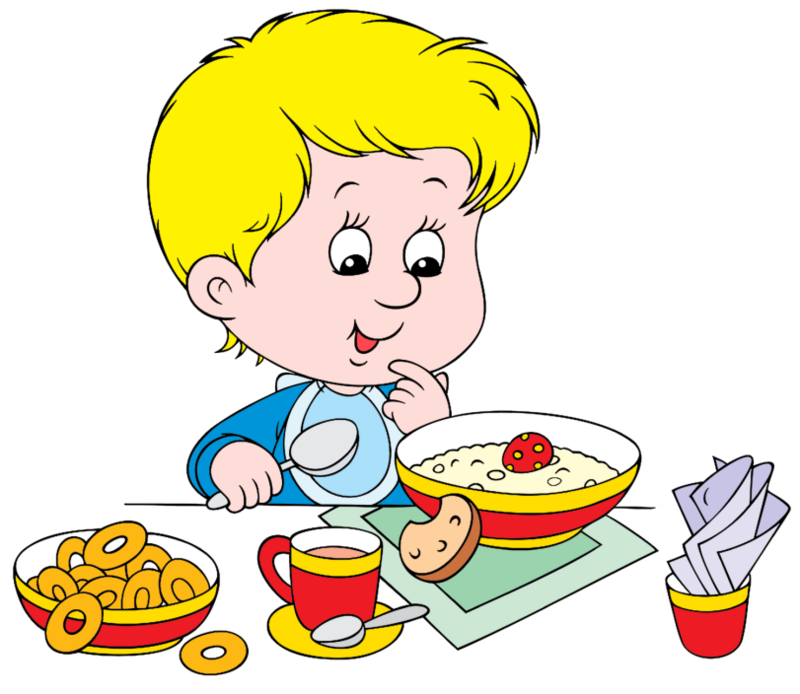 In Russia, meals that catering establishments can prepare for children are listed in approved collections. Cooking other dishes or deviating from approved recipes is prohibited.
In Russia, meals that catering establishments can prepare for children are listed in approved collections. Cooking other dishes or deviating from approved recipes is prohibited.
/eda-uchebnik/
Course on PP
Therefore, if we want to know exactly what recipe is used to prepare semolina porridge or how much sugar, semolina and milk are put in it, we can look at this information in the collection of recipes. For ten selected orchards, we got an average figure of 67 g of sugar per day.
This does not contradict sanpin, since the rules do not indicate the upper limit of sugar, but the minimum.
Some gardens show how much sugar is in each dish Others indicate the number of the flow chart, from which we can find out the recipe and ingredients of the dish It turns out that every day children eat 3.5 times the safe amount of sugar. The main sources of free sugars in the diet of children in kindergartens are compotes, teas and fortified drinks.
There are special rules for orphans: about 40% more sugar is added to their excessive sugar intake, and instead of 30 g, children receive at least 55 g of sugar per day.
Too much salt
The current Russian norm is 5 g of salt per day for children aged 5-7. For adults, the figure is the same.
However, WHO recommends salt reduction for children based on their energy needs compared to adults. For example, if an adult consumes on average 3,000 kcal per day, and a preschooler consumes 1,630 kcal, then the child should receive 2.7 g of salt per day. This means that the norms of salt consumption in sanpin are almost twice as high as compared to the WHO recommendations.
In fact, it is almost impossible to calculate how much salt a child in kindergarten eats per day: manufacturers in Russia are not required to indicate how much salt is contained in 100 g of a product.
Replacing fruits with juices and an unknown amount of fiber
Sanpin allows you to replace some products with others: for example, instead of beef, give children beef liver, instead of drinking milk - condensed with sugar, and replace fresh fruits with juice. Substitutions are formulated with nutritional value, i.e. calories. The amount of fiber, vitamins and minerals does not seem to matter.
Substitutions are formulated with nutritional value, i.e. calories. The amount of fiber, vitamins and minerals does not seem to matter.
Sanitary and epidemiological requirements for public catering. Appendix 11
On the menu in kindergartens, we see that children receive fresh fruit once a day - for second breakfast. Usually it is a pear, an apple or an orange: each kindergartener will eat 80-100 g. If the kitchen decides to replace the fruit with juice, then the portion will be larger: 106-133 g of juice.
But this substitution of fruit for juice reduces fiber intake and increases the already high content of free sugars in the children's menu.
Fruit Amounts for Children and Adults - USDA Guidelines
Fiber is an indigestible component of foods, an important food source for microorganisms in the human intestine. It reduces the risk of developing non-communicable diseases and death from them. Adults are recommended 25-29 grams of fiber per day. Children need less: children over 3 years old - 10-20 g of fiber per day according to the standards of Rospotrebnadzor and 15-20 g according to the standards of the UK Ministry of Health.
Children need less: children over 3 years old - 10-20 g of fiber per day according to the standards of Rospotrebnadzor and 15-20 g according to the standards of the UK Ministry of Health.
We do not know if this norm is maintained in kindergartens: the menu parameters include calories, proteins, fats and total carbohydrates, but how much fiber is there, we can only guess.
Although fiber is classified as a carbohydrate, it is impossible to talk about its amount based on the total amount of carbohydrates in the product. For example, 30 grams of carbs could be in one banana, two carrots, or one Twix bar. At the same time, there will be almost no fiber in chocolate, but there will be 18 g of sugar, and in banana and carrot - 0 free sugars and 5.4 g of fiber.
Too few vegetables
For children under 7 years of age, Sanpin recommends eating 220 g of vegetables and 140 g of potatoes per day. This is in line with world practice, but there is a problem: in fact, this norm is not observed in kindergartens.
We compared 10 menus, and judging by them, on average, children receive about 190 g of vegetables and 93 g of potatoes - this is 21% less than the required amount.
This is the menu in a kindergarten in Novosibirsk. Children will receive 50 g of salad vegetables and 88 g of borscht. Only 138 instead of 220. Potatoes are found only in borscht - a maximum of 132 g, depending on the season. This is close to the requirements of sanpin. We counted the number of vegetables thanks to the technological mapA lot of ultra-processed products
This category includes processed meat - sausages and sausage - and other products of deep processing: pastries, confectionery, sweet drinks. According to Russian standards, children should not be given raw smoked sausage, and boiled sausage can only be included in the menu in orphanages: a pupil of 3-7 years old will receive 10 g of sausage per day.
Classification of products by degree of processing
Study on the association of frequent consumption of fast food and obesity in children
Scientific review on the impact of fast food on children's health
Study on the relationship of fast food in the diet of children and their lipid metabolism disorders
Study on the relationship of regular consumption of fast food and an increased risk of premature death
On the other hand, other ultra-processed foods are allowed in ordinary kindergartens: pastries, bread, fruit juices. These foods are high in calories but low in nutrients.
These foods are high in calories but low in nutrients.
Studies show that children who regularly consume 30-50% of their calories from ultra-processed foods are more likely to develop lipid disorders and obesity. Studies in adults show that people who get more than 15% of their total calories from ultra-processed foods have a 58% higher risk of dying from cardiovascular disease.
In a typical kindergarten day menu, more than 21% of calories are presented in the form of products with high calorie content but low nutritional value: juices, compotes and tea with sugar, pastries, jams and bread made from premium flour.
This is the menu in the Moscow garden. Your child will get 2,659 calories per day, of which 36% comes from ultra-processed foods These diets can increase the risk of obesity, cardiovascular disease, and cancer. In addition, ultra-processed foods can crowd out other foods from the diet: children are more likely to eat sweet cereals, white bread and pastries than vegetables, fruits, fish and legumes.
Too little vegetable protein
Rospotrebnadzor recommends consuming 35 g of vegetable protein per day. Such protein is found mainly in legumes and nuts, and there are very few of them in the current menu in kindergartens or not at all. Deficiencies in these food groups lead to deficiencies in fiber and unsaturated fatty acids, the main components of dietary prevention of cardiovascular disease and cancer.
Of the 10 menus examined, none contained nuts. Children get vegetable protein mainly from buckwheat porridge, green peas and some bread.
An example of a daily menu in a kindergarten in Novosibirsk, which contains 21 g of vegetable protein A is a daily menu in a kindergarten in Yekaterinburg: vegetable protein is found in bread and carrot salad. Total 9.3 gParent-only mailing list
We tell you how to cope with parenthood and get the most out of the state. We send letters once a week - sign up, it's free
Too little fish
The American Academy of Pediatrics and the British Ministry of Health recommend eating two servings of fish per week, and one serving should be fatty fish, such as mackerel or salmon.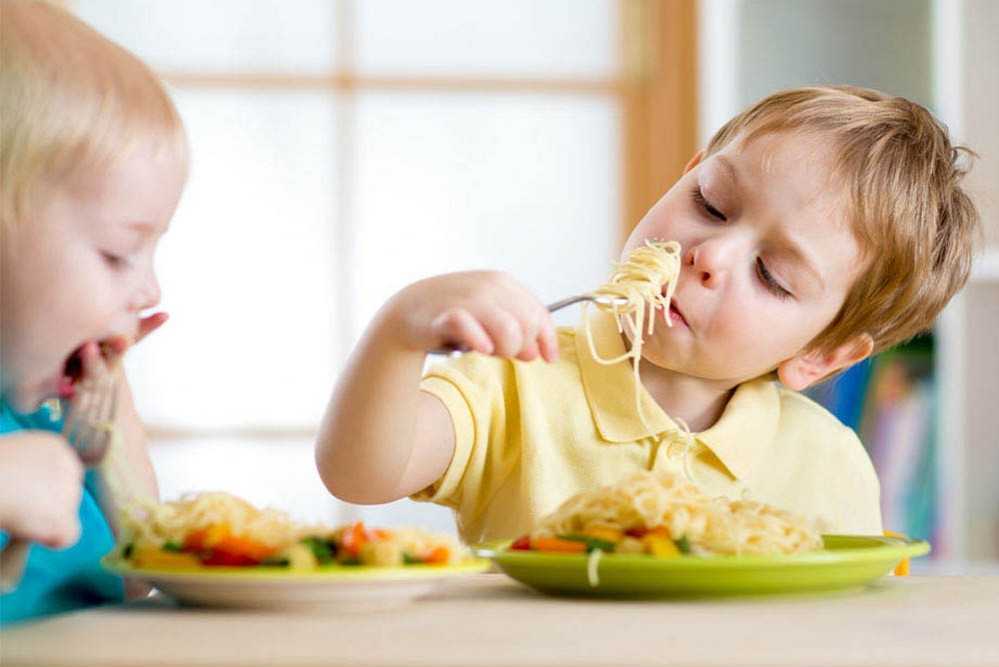 For children, this amount of fish is about 60 g per week.
For children, this amount of fish is about 60 g per week.
American Academy of Pediatrics Guidelines for Fish in Children's Diets
UK Department of Health Guidelines
Current regulations recommend giving Russian preschoolers 37 grams of fish per day, including light or lightly salted. This is an adequate amount, however, in practice, fish is often replaced with meat or dairy products. So you can: in the table of substitutions in sanpin it is indicated that instead of 100 g of cod, you can offer the child 87 g of beef or 105 g of cottage cheese.
But in this case, the norm of fish is not maintained. And fish and seafood is the only guaranteed source of omega-3 unsaturated fatty acids in the diet. The ones that are associated with a reduced risk of cardiovascular disease.
Of the 10 kindergarten menus we studied, fish dishes were only in half. If we calculate the average weight of fish dishes, we get 57 g - it looks like a normal amount. But in fact, the weight of a portion does not consist only of the weight of the fish. For example, potatoes, carrots and butter are put in pollock ear. Most likely, children receive about 30-40 g of pure fish per week - this is two times lower than the norm.
For example, potatoes, carrots and butter are put in pollock ear. Most likely, children receive about 30-40 g of pure fish per week - this is two times lower than the norm.
Why is this a problem
Such a menu will not harm the child for a day, a week, or two. But over a few years, unhealthy eating habits can form.
A child who is accustomed to breakfast with semolina, a loaf and tea with sugar, with a high degree of probability, grows into an adult for whom such a breakfast is the norm.
Regular nutritional imbalance is a risk factor for obesity, diabetes, cardiovascular disease and cancer. It turns out that, By instilling unhealthy eating habits in children, we raise them into adults with the risk of developing fatal diseases.
What can be changed
A global change in the menu in kindergartens is a complex and lengthy process, entirely tied to state bodies.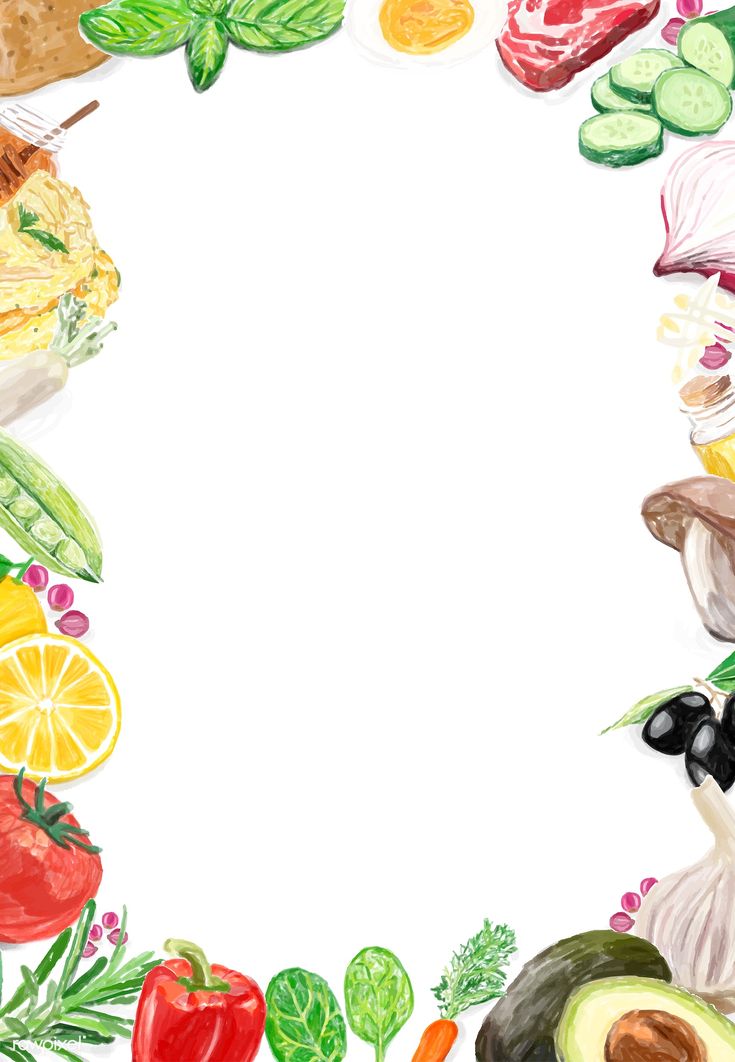 Any deviation from the menu is fraught with both the kindergarten administration and the food supplier who decides to put less sugar in the compote. Therefore, blaming the kindergarten for a bad menu is unproductive.
Any deviation from the menu is fraught with both the kindergarten administration and the food supplier who decides to put less sugar in the compote. Therefore, blaming the kindergarten for a bad menu is unproductive.
At the state level, it is necessary to revise the calorie norms - this is likely to help reduce the daily amount of sugar in children's menus. It is also necessary to revise the norms in sanpin: increase the amount of vegetables, fish, legumes, nuts and whole grain carbohydrates, reduce the amount of salt, exclude the replacement of fruits with juices, and do not give drinks with added sugar to children at all.
However, private kindergartens can do something themselves to make children's nutrition more balanced. For example, they can approve the menu, choose another food supplier, or cook on their own. Yes, the menu must meet the requirements of the SanPin, but the norm of 1800 kcal can be obtained not through sweet buns and processed grain porridge, but thanks to legumes, oily sea fish, whole grain carbohydrates, a large number of vegetables and fruits, dairy products without sugar.
This way, children will have a chance to reach the norm for fiber, omega-3 fatty acids, vegetable protein and not exceed the norm for salt and sugar.
How to help your child
Feed breakfast at home. Try to include unsaturated fats, such as nuts and seeds, and whole grain carbohydrates: rye flour and second-grade flour breads, cereals with a shell, vegetables and fruits. A quick and healthy option is a smoothie with oatmeal, nuts, fruit, and a sugar-free fermented milk drink.
Teach your child to drink water and ask for it when he is thirsty. The current sanpin provides for the mandatory availability of drinking water in any kindergarten, so the child should always have a choice whether to drink sweet compote or a glass of water. Separately, you can ask the teacher not to specifically remind about compote, but to put a glass of water.
Bring your own food. This item is especially relevant for children with special diets or medical nutrition. It is possible that you will be able to get a certificate from the pediatrician about the need to eat less sugar and more vegetables. To accept a child with their own lunch box, the kindergarten must have a refrigerator and a microwave. If there is no technology, then talk with the teacher so that the child is not forced to eat up if he does not want to.
It is possible that you will be able to get a certificate from the pediatrician about the need to eat less sugar and more vegetables. To accept a child with their own lunch box, the kindergarten must have a refrigerator and a microwave. If there is no technology, then talk with the teacher so that the child is not forced to eat up if he does not want to.
Teach your child to make healthy choices. The family plays a decisive role in shaping the child's eating habits: children are more likely to eat vegetables and fruits if they see that their parents themselves choose such food. After the kindergarten, the child often has dinner at home, so it’s better to offer him something that he didn’t get in the kindergarten: cutting fresh vegetables, broccoli or cabbage salad, fish, legumes and other foods that are more healthy than sweet semolina.
What is the result
The menu in kindergartens and schools in Russia has drawbacks: it contains more sugar, salt and calories than the international scientific consensus allows. There are few vegetables and fruits, and carbohydrates are mainly refined sources, almost completely devoid of fiber: semolina, sugary drinks. Red meat is more common than fish and legumes.
There are few vegetables and fruits, and carbohydrates are mainly refined sources, almost completely devoid of fiber: semolina, sugary drinks. Red meat is more common than fish and legumes.
Here is what can be done to ensure that Russian children in kindergartens are fed in accordance with international recommendations:
- Set the upper limit of free sugars to 15 g per day.
- Reduce the amount of salt to 2-3 g per day.
- Do not replace fruits and vegetables with juices.
- Achieve the recommended amount of fiber per day. To do this, enter the breakdown of carbohydrates into free sugars and fiber into the menu and indicate it on the menu along with calories, proteins and fats.
- Enter the required minimum of dishes - sources of vegetable protein.
- Exclude industrial sweets like juices and jellies from the menu in kindergartens.
- Increase oily fish intake to a minimum of two 30g servings per week.
- Revise the allowance for orphans - keep the amount of sugar at an acceptable level, and increase the calorie content through foods with a rich nutritional value.

| Educational services Road safety
State social assistance on the basis of a social contract
Kindergarten №6 Address: Vladivostok, |
|


 For the preparation of second courses, in addition to beef, offal is also used (liver in the form of soufflé, cutlets, meatballs, goulash). Every day, the menu includes vegetables, both fresh and boiled and stewed. Children regularly receive sour-milk products for an afternoon snack.
For the preparation of second courses, in addition to beef, offal is also used (liver in the form of soufflé, cutlets, meatballs, goulash). Every day, the menu includes vegetables, both fresh and boiled and stewed. Children regularly receive sour-milk products for an afternoon snack.  In addition, properly organized nutrition forms cultural and hygienic skills in children, good habits, the so-called rational eating behavior, and lays the foundations of a food culture.
In addition, properly organized nutrition forms cultural and hygienic skills in children, good habits, the so-called rational eating behavior, and lays the foundations of a food culture. 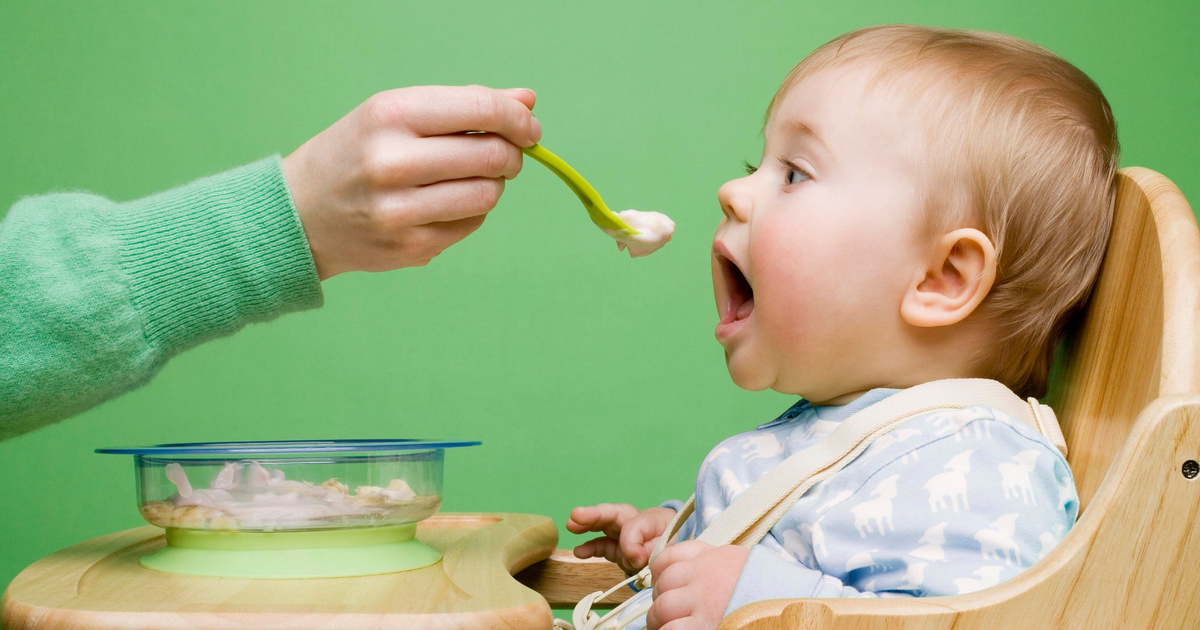 96 KB
96 KB 

